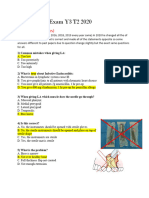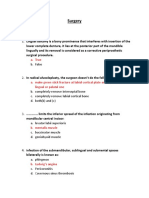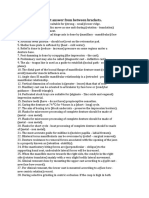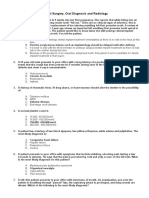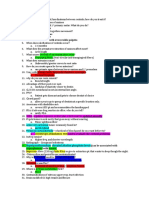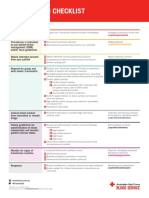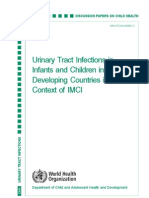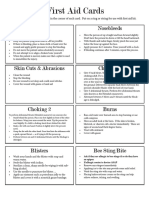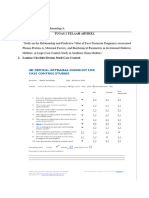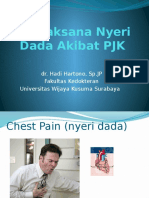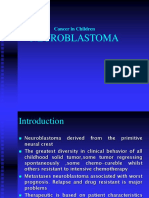0% found this document useful (0 votes)
1K views6 pagesC) Asa Iii: D) Left Lateral Position
This document contains 33 multiple choice questions about oral surgery procedures and patient management. It addresses topics like ASA patient classification, managing patients on anticoagulant therapy requiring dental work, pregnancy-related positioning during medical issues, timing of procedures after medical events like myocardial infarction, and more. The questions cover cyst and tumor treatments like marsupialization, enucleation, and resection as well as other procedures like alveoloplasty, tori removal, and ridge modification.
Uploaded by
mcshah19Copyright
© © All Rights Reserved
We take content rights seriously. If you suspect this is your content, claim it here.
Available Formats
Download as DOCX, PDF, TXT or read online on Scribd
0% found this document useful (0 votes)
1K views6 pagesC) Asa Iii: D) Left Lateral Position
This document contains 33 multiple choice questions about oral surgery procedures and patient management. It addresses topics like ASA patient classification, managing patients on anticoagulant therapy requiring dental work, pregnancy-related positioning during medical issues, timing of procedures after medical events like myocardial infarction, and more. The questions cover cyst and tumor treatments like marsupialization, enucleation, and resection as well as other procedures like alveoloplasty, tori removal, and ridge modification.
Uploaded by
mcshah19Copyright
© © All Rights Reserved
We take content rights seriously. If you suspect this is your content, claim it here.
Available Formats
Download as DOCX, PDF, TXT or read online on Scribd
/ 6








